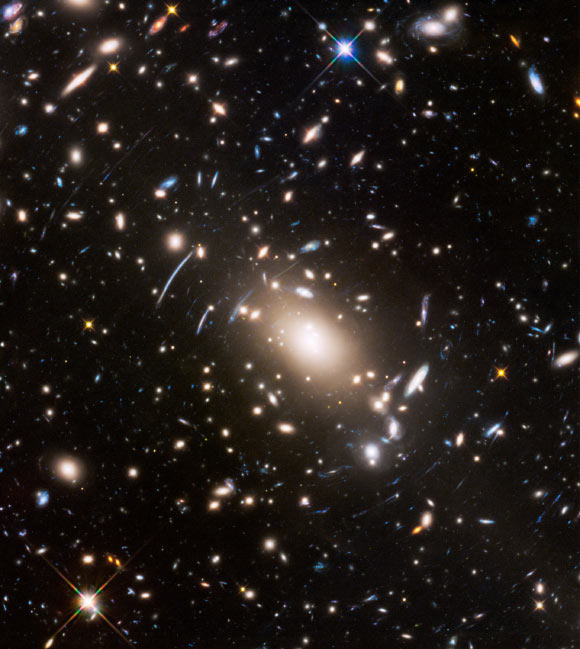The NASA/ESA Hubble Space Telescope has captured a striking photo of Abell S1063, a massive cluster of galaxies in the constellation Grus.

In the center of this Hubble image is the immense galaxy cluster Abell S1063, located 4 billion light-years away, and surrounded by magnified images of galaxies much farther. Image credit: NASA / ESA / J. Lotz, STScI.
This view of Abell S1063, which can be seen in the center of the image, shows it as it was 4 billion years ago.
The cluster contains approximately 100 million-million solar masses, and contains 51 confirmed galaxies and perhaps over 400 more.
Thanks to Hubble’s exquisite sharpness, the photo unveils the effect of space warping due to gravity.
The huge mass of Abell S1063 distorts and magnifies the light from galaxies that lie behind it due to an effect called gravitational lensing.
This phenomenon allows Hubble to see galaxies that would otherwise be too faint to observe and makes it possible to search for, and study, the very first generation of galaxies in the Universe.
The first results from the data on Abell S1063 promise some new discoveries.
Already, a young galaxy has been found in the field, as it looked a billion years after the Big Bang.
Astronomers have also identified 16 background galaxies whose light has been distorted by the cluster, causing multiple images of them to appear on the sky.
This will help scientists to improve their models of the distribution of both ordinary and dark matter in the galaxy cluster, as it is the gravity from these that causes the distorting effects.
These models are key to understanding the mysterious nature of dark matter that comprises most of the mass of the Universe.
This Hubble image is a composite of separate exposures acquired by Hubble’s Advanced Camera for Surveys (ACS) and Wide Field Camera 3 (WFC3) instruments.
Seven filters were used to sample various wavelengths. The color results from assigning different colors to each monochromatic image associated with an individual filter.
The image is part of the Hubble Frontier Fields, an ambitious three-year, 840-orbit program, begun in 2013, that teams Hubble with NASA’s other space observatories – the Spitzer Space Telescope and the Chandra X-ray Observatory – to probe the early Universe by studying six different galaxy clusters.







